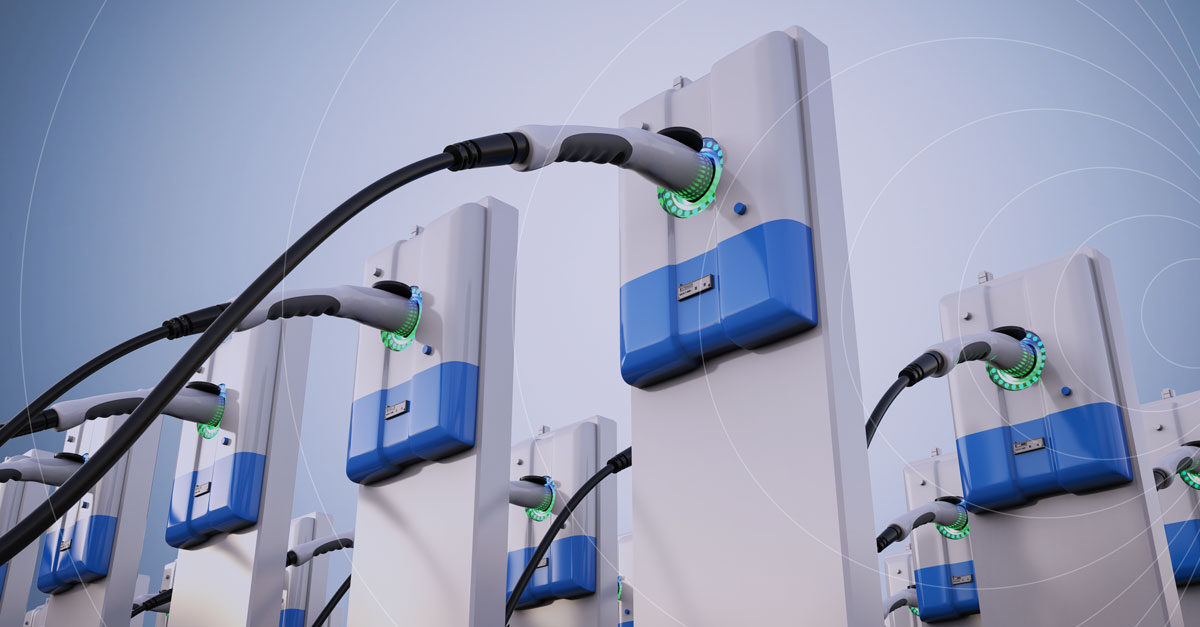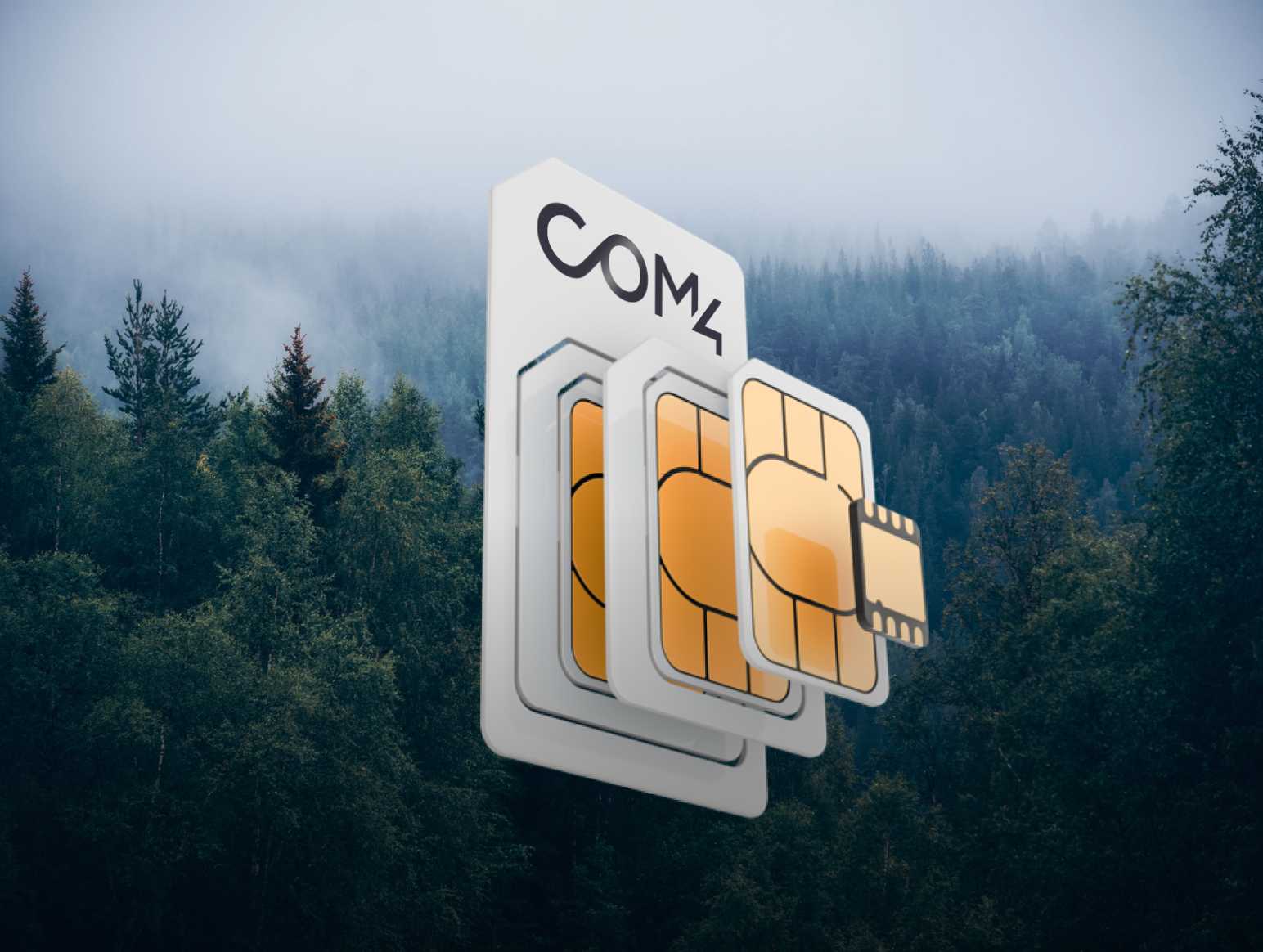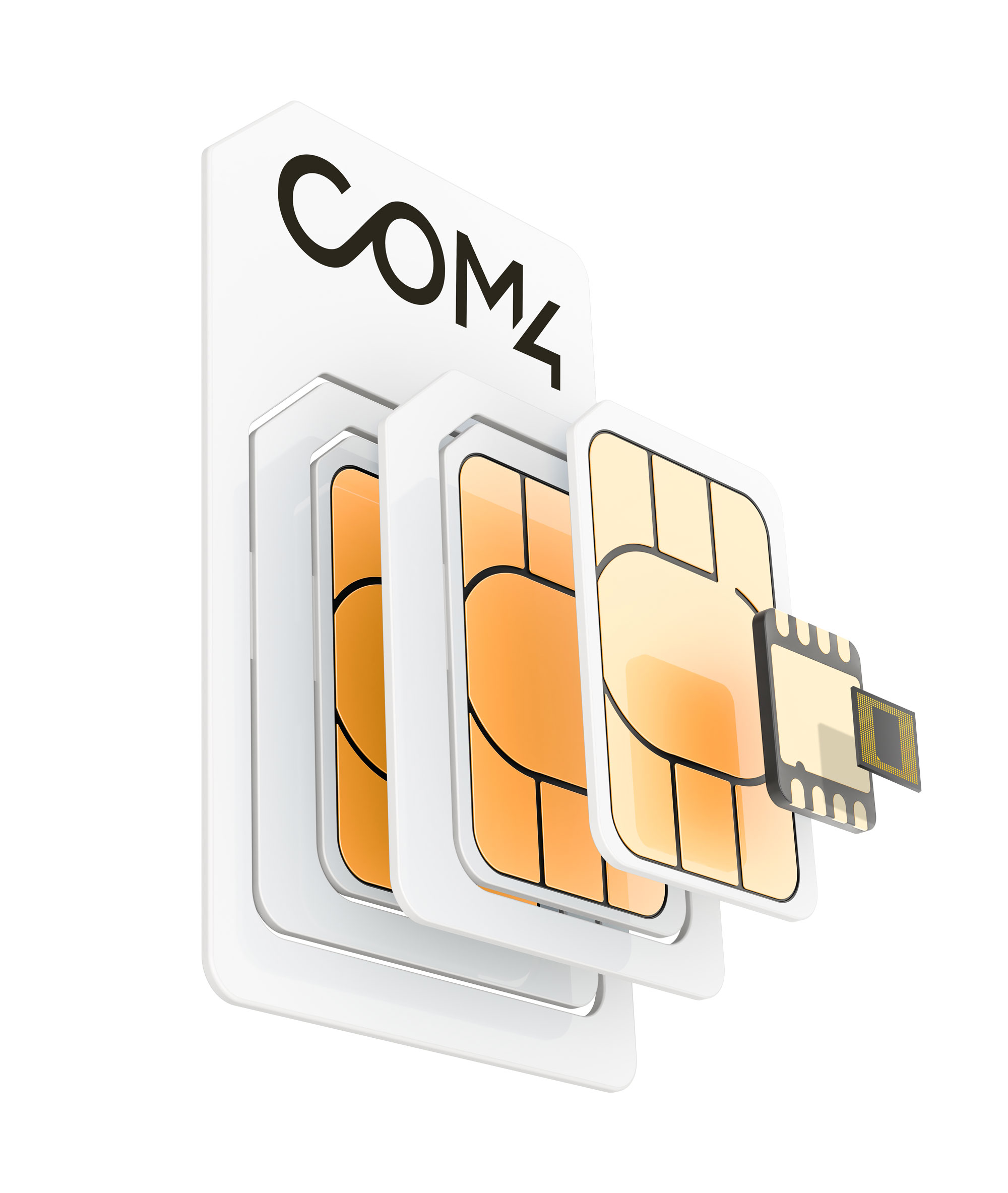The installation of EV charging stations and infrastructure, for instance, is contributing to cleaner and quieter surroundings. This transition not only promises a greener future but also stimulates economic growth, creates jobs, and fosters technological innovation. Internet of Things (IoT) technology has played—and continues to play—a key role in this transformation.
IoT, with its capacity to connect devices, systems, and services, is serving as a catalyst, accelerating the transformation brought by electric mobility. At Com4, we’ve worked hard to be an IoT provider that people actually want to work with, and we’ve become the number one IoT provider in Norway. Now, we’re leading the way in leveraging IoT technology to promote electric mobility. Our innovative solutions for EV charging infrastructure and grid integration are setting a benchmark for the sustainable future of urban landscapes.
The evolution of electric mobility
Electric mobility has come a long way in the past century, and its journey is too rich to cover here in detail. In the late 19th and early 20th centuries, the first iterations of EVs were developed, but it wasn't until the 21st century that their adoption began to see significant increases. Rapid advancements in battery technology and a greater awareness of environmental concerns among global governments, businesses and individuals have strongly contributed to this growth.
Today, EVs are becoming much more commonplace—especially in countries like Norway, Iceland and Sweden—and the number of them on the road is testament to the trend. In 2022, cumulative global plug-in sales passed 20 million units, half of which are now on roads in China, and a million of which are now on roads in the UK.
Alongside this growth in the number of EVs, the development of reliable and efficient charging infrastructure has been critical to furthering its progress. EV charging infrastructure is the backbone of electric mobility, directly affecting its rate of adoption and potential impact on the transportation landscape.
To bridge the gap between traditional and electric mobility, strong investments have been made to ensure accessible, reliable and efficient charging stations are available. Companies like Com4 are at the forefront of this transformation by providing innovative EV charging infrastructure solutions, helping to propel electric mobility into the future.
.jpg?width=5500&height=3672&name=shutterstock_1725394717-min%20(1).jpg)
The role of IoT in EV charging infrastructure
IoT technology has become an important component of EV charging infrastructure, connecting the various components of EV chargers with networks. This allows for the communication of data from chargers to a central hub, providing dynamic and historical information about the charging stations to users and administrators.
IoT applications for EV charging range from real-time tracking of charging status to optimising power usage during charging sessions. They facilitate remote monitoring and management of charging stations, streamline energy consumption, and ensure efficient use of the grid. IoT can also serve as the basis for smart charging solutions, which dynamically adjust power flow based on grid capacity, among other factors.
Com4's IoT Connectivity Management Platform is an innovative solution that exemplifies the power of IoT in enhancing EV charging infrastructure. It provides seamless control and full lifecycle management of connected devices within the EV charging network. This platform, built with a focus on scalability, efficiency, and flexibility, enables singular or bulk actions to manage subscriptions and offers real-time visibility of device status updates.
Our platform ensures that EV charging stations operate efficiently and adapt swiftly based on network demand and grid capacity. In essence, we’re leveraging IoT to transform the EV charging ecosystem, continuing the evolution of electric mobility.
Com4's innovative solutions in EV charging
At Com4, we’re pioneering in the EV charging landscape with our unique multi-network coverage SIM card. It ensures reliable global connectivity for EV charging, a fundamental component of a more sustainable future. This SIM card, compatible with 2G, 3G, 4G, 5G, NB-IoT, and LTE-M networks, guarantees seamless operation of charging stations anywhere in the world. It intelligently switches between networks to maintain the strongest possible connection, contributing significantly to the robustness of the EV charging network.
As we advance further into the age of IoT, new forms of SIM cards like the iSIM are emerging and offering more advanced features compared to traditional SIM cards.
Our services extend into advanced energy management. By facilitating efficient management of charging sessions and power flow optimisation, we’re helping to reduce unnecessary energy wastage and enhance grid stability. Our system intelligently regulates the flow of power during charging sessions, ensuring optimal utilisation of resources. This focus on energy efficiency aligns with the broader purpose of electric mobility, creating an EV charging ecosystem that benefits both consumers and the environment.
At the forefront of our offering are our IoT-enabled charging stations. These stations leverage the power of IoT to adapt to network demand and grid capacity dynamically. By responding in real-time to varying grid conditions and user demand, they ensure a seamless, efficient, and reliable charging experience for EV users. This is reshaping the EV charging landscape, laying the groundwork for a future in which electric mobility is the norm.
.jpg?width=4000&height=2667&name=Com4_april2023_8026%20copy-min%20(1).jpg)
How electric mobility is transforming urban landscapes and strengthening grid resiliency
Electric mobility is fundamentally reshaping urban landscapes, signalling a shift towards cleaner, quieter and more sustainable cities. Streets once filled with the rumbles and fumes of combustion engines are now becoming home to the gentle hum of electric vehicles. As more cities embrace electric mobility, they also are undergoing a remarkable metamorphosis.
Transforming urban landscapes
One of the most visible signs of this transformation is the increasing ubiquity of EV charging stations. The rise of electric mobility requires an expansive network, and stations can now be found in parking facilities, shopping centres, public spaces, and even integrated into street lighting. Some cities are adopting wireless charging technologies, such as inductive charging lanes, which could further change the look of city streets.
The EVs that use these charging stations produce zero tailpipe emissions, which has led to cleaner city air and less noise. This not only enhances the aesthetic appeal of cities but also contributes to the health and wellbeing of those who live within them. Quieter, cleaner streets are leading to increased use of outdoor spaces and improved overall livability.
The advent of electric mobility and its supporting infrastructure like EV charging stations have been integrated into existing city structures. This includes the development of multi-use structures like solar-panelled EV charging canopies that provide shade while generating electricity. Such innovations are also changing the aesthetics of city infrastructure.
As cities become smarter, IoT technologies are increasingly used for traffic management, optimising charging station usage, reducing energy consumption, and improving city services. This might lead to the addition of more sensors and connected devices throughout the cityscape.
Strengthening grid resiliency
More than just beautifying cityscapes, electric mobility also has significant implications for the grid's resiliency. EVs and their charging infrastructure introduce large amounts of flexible load onto the grid. These loads can be managed intelligently to balance supply and demand, and even act as energy storage resources to stabilise the grid. This not only enhances grid reliability but also enables a greater integration of renewable energy sources like wind and solar power.
The application of IoT technology, like Com4's IoT Connectivity Management Platform, is playing a significant role in enhancing grid resiliency. By facilitating real-time communication between charging stations and the grid, IoT technology enables smart charging strategies. These can dynamically adjust power flow based on grid capacity, EV battery status, and real-time energy prices. Such grid-interactive solutions can mitigate peak demand, prevent grid overload, and optimise energy use, making the energy grid more resilient.
EVs and charging infrastructure can be integrated into the grid as distributed energy resources. This can improve grid resiliency by spreading power generation and storage across many locations, reducing the impact of any single point of failure. It also leads to improved communication between the grid and components of the energy system, further enhancing grid performance and stability.
Some systems even allow for 'vehicle-to-grid' (V2G) technology, where EVs return electricity to the grid during peak demand periods. V2G technology can further strengthen grid resiliency by increasing flexibility, reducing peak demand, and reducing the need for costly emergency generation from traditional sources, thus reducing overall electricity costs.
The impact of Com4's solutions on urban landscapes
Our comprehensive solutions are reshaping not only the EV charging landscape but also urban landscapes at large, making them more sustainable, efficient, and technologically advanced. The transformative impact of our solutions can be seen in the expansion of EV charging infrastructure, the optimisation of energy use, and the transition towards smart, connected cities.
Expanding EV charging infrastructure
With our revolutionary multi-network coverage SIM card, we are aiding in the proliferation of EV charging stations worldwide. Our solution offers seamless global connectivity that reduces the possibility of network disruptions, ensuring that EV charging stations operate reliably irrespective of their geographical location. This is particularly beneficial in densely populated urban areas where demand for charging stations can be extremely high.
Our multi-network SIM accelerates the adoption of EVs by bolstering user confidence in the robustness of charging infrastructure. As a result, cities are seeing a considerable rise in the deployment of EV charging stations, transforming parking spaces, commercial complexes, and even residential areas. The increasing prevalence of EV charging stations is contributing to the reduction of range anxiety, encouraging more people to switch to EVs and fostering a more sustainable urban transport system.
Optimising energy use and enhancing grid resiliency
The application of our IoT Connectivity Management Platform in the EV charging infrastructure has implications for energy optimisation and grid resiliency. Our platform's ability to offer real-time visibility of device status updates and manage subscriptions efficiently enables precise regulation of power flow during charging sessions. This leads to minimal energy wastage and improved grid stability, which are critical in urban areas that face high energy demand.
Intelligent power regulation, like that supported by our IoT Connectivity Management Platform, encourages integration of renewable energy sources into the grid. By optimally making use of power flow, the platform allows for a larger share of renewables in the energy mix. This incentive mechanism is decarbonising cities and pushing them closer to their sustainability goals. In Amsterdam, for example, our smart charging solutions are supporting the city's ambitious sustainability goals, with the municipality aiming to be emissions-free by 2030.
Catalysing the development of smart cities
As cities aim to become smarter, the role of IoT providers like Com4 in facilitating advanced IoT connectivity is becoming increasingly crucial. Our IoT solutions, integrated with our charging infrastructure, lay the groundwork for connected and intelligent urban landscapes. The IoT-enabled charging stations, capable of dynamically adapting to network demand and grid capacity, are paving the way for more intelligent urban infrastructures.
In addition to EV charging stations, the scalability and flexibility of our IoT Connectivity Management Platform makes it suitable for a range of other applications essential to smart cities, such as traffic management, waste management, and smart lighting. Our solutions are thereby contributing to the creation of more efficient, responsive, and sustainable urban ecosystems.
Empowering businesses and individuals
At the core of our mission is a commitment to guide our customers into the future of IoT. By providing tailored solutions that cater to specific communication challenges, we are empowering businesses and individuals alike. Our level of customer care, even at the presales stage, ensures that our customers choose the right technologies for their needs, which paves the way for more effective and sustainable operations.
Our innovative solutions are having a profound impact on urban landscapes worldwide. Our commitment to reliable IoT connectivity, intelligent energy management, and customer satisfaction is fostering the transition towards greener, smarter, and more resilient cities. As we move further into the age of IoT and electric mobility, our role in shaping our urban future is only set to grow.
The future prospects of electric mobility
In envisioning the future of our energy grid within the context of electric mobility, we see a synergistic network that’s highly adaptive, decentralised, and integrated with renewable energy sources. It's a dynamic vision, a transformation from the current, often linear, system to one that is flexible and multi-directional, balancing inputs and outputs with unprecedented efficiency.
Electric vehicles, equipped with smart charging systems, play an instrumental role in this future grid. EVs will not only draw power from the grid but also feed energy back when needed. Picture a fleet of electric vehicles charged with solar power during the day. In the evening, when demand peaks and sunlight diminishes, these vehicles could return their excess power to the grid, effectively turning each EV into a mobile energy storage unit. In this future, the rate of EV adoption would be so high that a passing combustion engine based car will feel out of place.
This ongoing transition to electric mobility is not without technological, infrastructural, and behavioural challenges. But the opportunities far outweigh these hurdles, and IoT providers like us are stepping up to keep innovating. As the leading IoT provider in Norway, Com4's experience and innovative capabilities make it one of the best positioned companies to support this transition.
Com4's IoT-enabled solutions promise to revolutionise EV charging infrastructures and energy management. The continued refinement of these solutions will not only accommodate the growing fleet of EVs but will also better equip cities to manage energy demand, contributing to the overall stability and resiliency of the grid. Our modern SIM cards and IoT Connectivity Management Platform are key components in facilitating this transformation.
The scalability and adaptability of our platform holds exciting possibilities. As cities grow smarter and more connected, our solutions could extend beyond EV charging infrastructure, integrating with other IoT-based services to create efficient, responsive, and sustainable urban ecosystems.
Whatever the future holds for our urban landscapes, it's clear that electric mobility and IoT technology will continue to play defining roles. Through innovative solutions, the challenges of integrating electric vehicles into our cities and our power grids can be addressed with elegance and efficiency.
The power of IoT in electric mobility will enable us to create urban environments that are not just capable of supporting the demands of the present, but are also future-ready. From expanding charging infrastructure to optimising energy use, advanced technology solutions are driving us towards a future where electric mobility and smart cities aren't mere concepts, but a lived reality.

 CASE STUDY
CASE STUDY



.jpg)



.jpg)